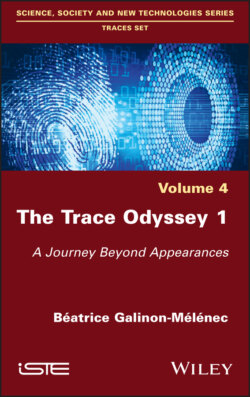Читать книгу The Trace Odyssey 1 - Beatrice Galinon-Melenec - Страница 13
I.7. From “trace anthropocentrée” to the signe-trace
ОглавлениеWhen we use the term signe-trace in Figure I.1, we place ourselves in an anthropocentric context.
DEFINITION.– In our paradigm, a sign is a part of a “réalité-trace” in the anthropocentric perception of an “homme-trace”. A sign is a “signe-trace”.
To designate a sign by the terminology “signe-trace”21 is to present the sign as a “conséquence-trace” of complex dynamic processes of “conséquences-traces” that we explain in the next part of the book.
Let us remember, for the moment, that:
– Placing the concept of trace in the context that we have just specified corresponds to our wish to offer the reader a critical approach to the “trivial” use of the term (Jeanneret 2014) and the taken-for-granted thoughtlessness that it implies. It is so “natural” to forget that the meaning of the term social is not necessarily shared (Hall 1984)22.
– Relationships between humans are no longer confined to a co-presence. They increasingly take place at a distance and are often established between people who are very far apart geographically, socially and culturally. It is therefore necessary to express oneself with words, whose nuances can be understood and interpreted correctly by different speakers. This is all the more important as the shift in usage between oral and written expression is spreading with the explosion of digital writing, which is now instantaneous23.
For this reason, if we place ourselves as a researcher in the information and communication sciences, addressing readers from other cultures or other sciences, we think it is appropriate to show the different levels of the use of the term “trace”. The different levels can be deconstructed to show their relativity and, finally, to reconstruct them on the basis of a linguistic consensus integrating definitions that allow us to distinguish the singularities of meaning between trace, sign, indice and imprint.
The relationship between these terms has already produced a significant number of publications, the most essential of which can be found in the References section. Controversies, sometimes very lively ones, among certain authors have provoked schools of thought.
For our part, guided by the idea of exploring the complexity of the concept of trace from an approach that we see as interdisciplinary, we propose to study the trace as a result of the influence of an event on its environment/milieu24. This choice allows us to state that all the consequences of an event can be considered as a trace, hence the evocative term conséquences-traces. This enables us to situate the terms “imprint”, “mark” and indice in relation to the term conséquences-traces.
